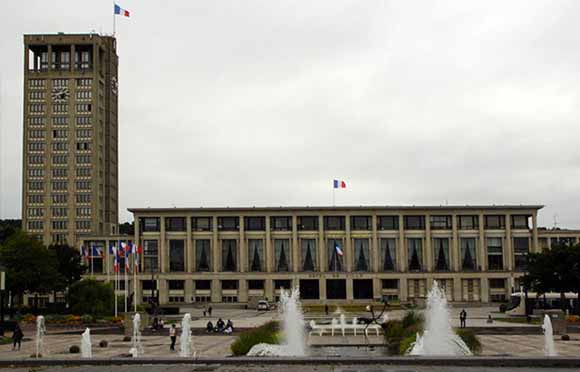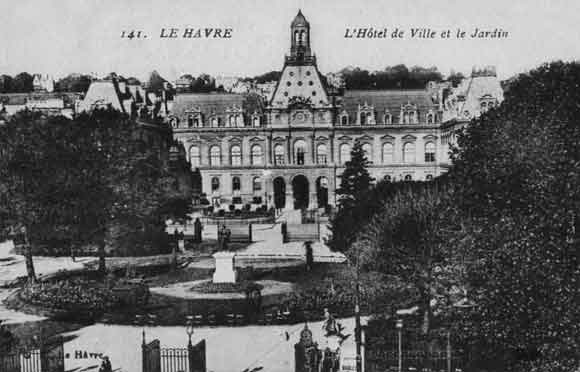Visit  Le Havre's unmissables
Le Havre's unmissables
Step 1 of 5  Hôtel de ville
Hôtel de ville
Compare Le Havre between 1935 and 2016
 2016
2016 1935
1935Hôtel de ville's secrets
Till the begining of the 19th century, the city's fortifications were standing on the City Hall actual location.
In 1839, Fortuné Louis Brunet-Debaines was named Le Havre official architect. He built many buildings as the Library Museum;
Customs' city, Saint-Nicolas de l'Eure's church and Le Havre City Hall which is unveil in 1857. The edifice is named the
"small Louvre"regarding its size but aswell for the role played by Fortué Louis Brunet-Debaines in the Louvre achievment in Paris.
In 1928, a François Ier bronze statue the music stand the the inahitants enjoyed every sundays.
In 1944, Le Havre City Hall is totally destroyed by bombings.
After the wer, the best remaining stones were used to rebuilt Saint Paul d'Aplemont's church.
In 1958, after 5years of work, Le Havre City Hall is rebuild by Auguste Perret; making this building the main line of the city,
between the train station and the beach. The tower houses the administratives offices and the long building accomodates
the exhibition and reception rooms.
The City Hall garden is lower than the street because the city has been rebuilt on the fromer street ruins.
This kind of difference can also be senn on Théodore Maillard street or in front of Notre-Dame cathedral.
The adjacent theatre is unveiled in 1967 and an extension is added on the north face in 1987.
In 1990, south garden is modified in order to reduce the central boulevard and manage a bus corridor.
An underground car park is created and foutains added, tress and exotic wood lattice (dismantled in 2010).
In 1932, the tramway led to avenue René Coty. In 2013, it reoperates and crosses the garden and led to Strasbourg boulevard.

